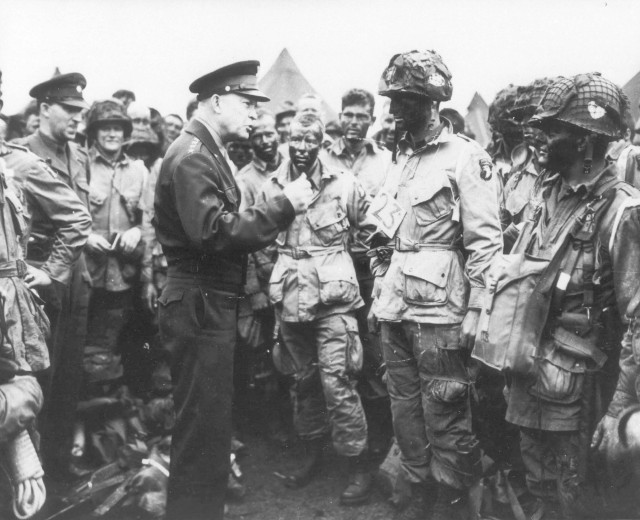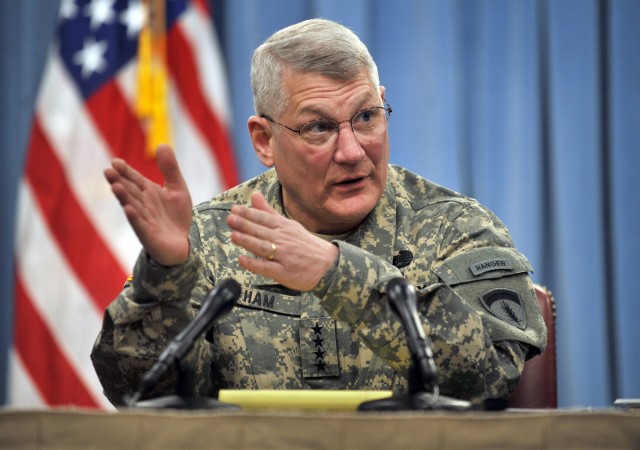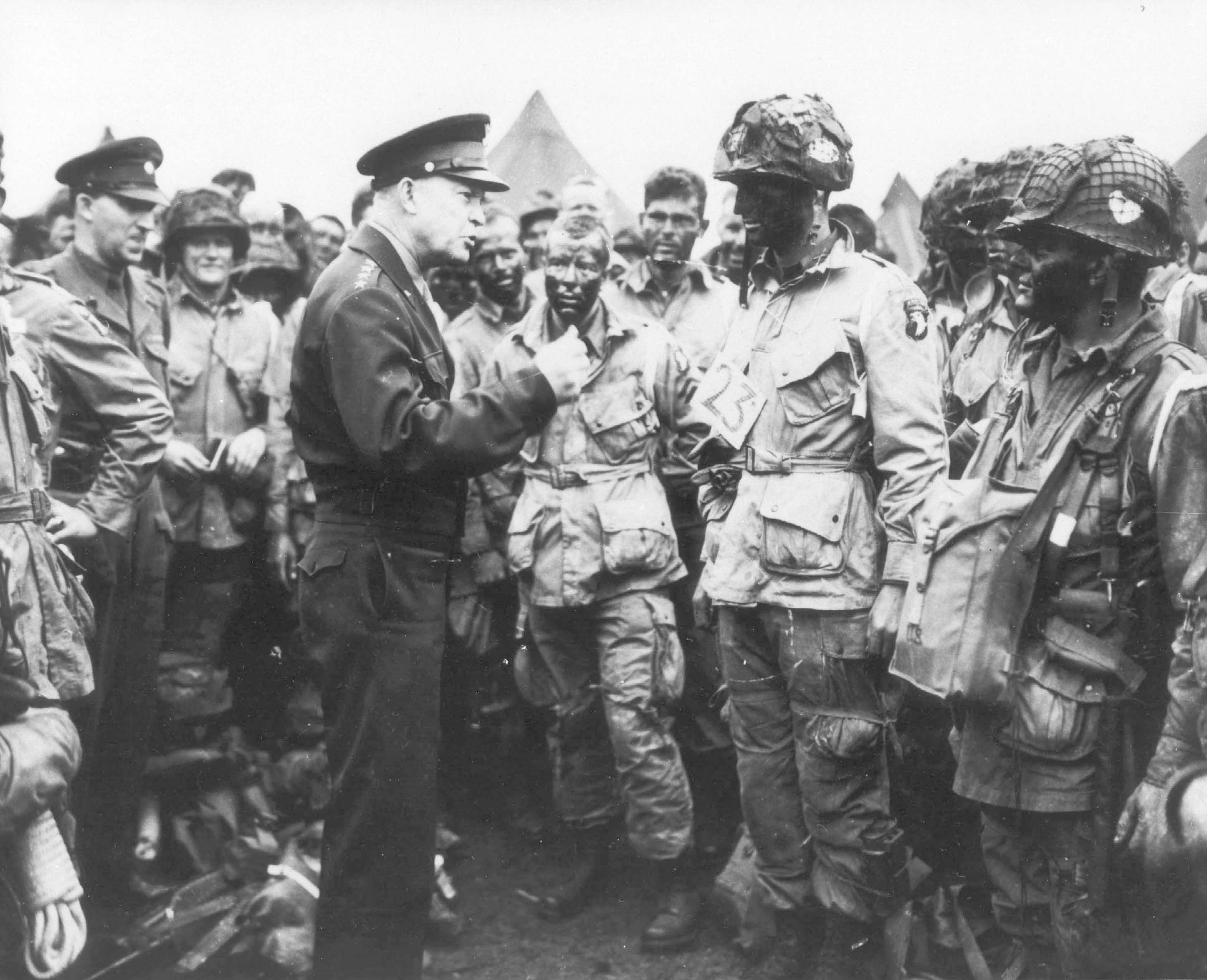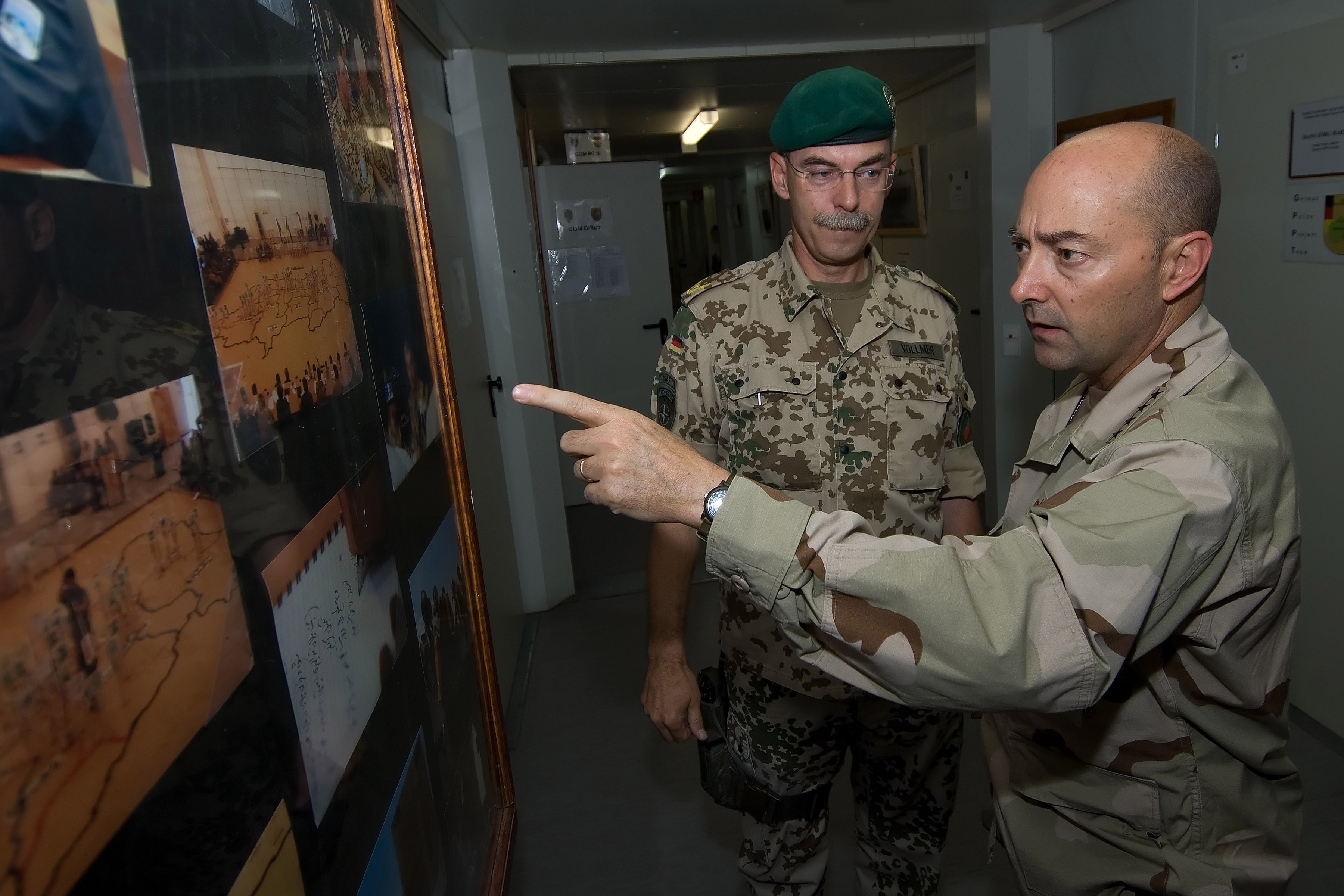CHIAfE+VRES, Belgium -- Aca,!A"This continent Aca,!" where democracy and liberty were born, where western civilization flourished, where reason and free inquiry first took root in the minds of humankind Aca,!" has enjoyed the blessings of peace and prosperity just as it has suffered the ravages of conflict and quarrel.Aca,!A?
The Supreme Allied Commander, Europe, Adm. James Stavridis, made those remarks 65 years after the culmination of the Second World War, as he took command of the Supreme Headquarters Allied Powers, Europe on July 2, 2009.
In the 65 years since the warAca,!a,,cs end and the 60 years since NATOAca,!a,,cs establishment, the American-European Alliance has changed in many ways, but it has continued a transatlantic bridge of democracy and freedom.
On July 4, 1944, as Americans were celebrating their independence at home and fighting for liberty abroad, Gen. Dwight D. Eisenhower, the then-Commander of the United States Army, Europe and future SACEUR, flew over enemy territory and walked the grounds of Normandy with Gen. Omar Bradley to survey the progress of D-Day.
Aca,!A"The hopes and prayers of liberty-loving people everywhere march with you,Aca,!A? he told the Soldiers, Sailors and Airmen before jumping into France on June 6. Aca,!A"I have full confidence in your courage, devotion to duty and skill in battle. We will accept nothing less than full victory!Aca,!A?
Aca,!A"We look back to that time with great respect for all that our predecessors achieved and accomplished and the standard that they set for us here in Europe,Aca,!A? said the now-Commanding General of USAREUR and the Seventh Army, Gen. Carter Ham. Aca,!A"ItAca,!a,,cs an important legacy.Aca,!A?
Following the war, and ever since, AmericaAca,!a,,cs role in Europe has seen a constant evolution. One of the initial transformations was the establishment of NATO in 1949.
Aca,!A"For 60 years, generals with names like Eisenhower, Ridgeway, Haig, Jones, Shalikashvilli, Ralston and, of course, John Craddock have stood guard Aca,!A| and strengthened the pillars of transparency, trust, friendship and cooperation upon which our transatlantic bridge is built,Aca,!A? Stavridis, the highest military authority in NATO remarked on July 2.
The Alliance ensures that if one member nation is attacked, it is to be considered an attack against them all, and that each will assist accordingly to maintain the security of the North Atlantic region.
Overtime, the Cold War began to threaten the Alliance, causing another shift and movement of forces. Aca,!A"In the fall of 1978, for the first time since the end of World War II, a major U.S. combat formation took up station in the northern part of the Federal Republic of Germany,Aca,!A? according to a 1980 USAREUR publication entitled Strengthening NATO.
In support of NATOAca,!a,,cs Northern Army Group, the 3rd Brigade, 2nd Armored Division, along with combat support assets, stood up a forward-deployed division in Garlstedt, Germany, a village just south of Bremerhaven.
"The stationing of the 2nd Armored Division (Forward) in this area is clear evidence of our collective determination," said the then-U.S. Secretary of Defense Harold Brown, as reported in the Oct. 18, 1978, issue of the European Stars & Stripes. "It is also a mark of our close and continuing collaboration with the Federal Republic of Germany. These forward elements, from one of our most powerful divisions, are here because a forward defense of Germany, and the deterrence of any attack is vital to the United States, as well as, the federal republic."
General Ham, who was a first lieutenant with USAREUR in Germany at that time, reflected on how AmericaAca,!a,,cs presence in Europe has changed. Aca,!A"Since the end of the Second World War, our forces were staged in Europe during the Cold War-era where we thought we would have to fight, exclusively preparing for what fortunately never happened.
Aca,!A"Our focus was very different,Aca,!A? he continued. Aca,!A"We knew our enemies. We studied their doctrine, their leaders, and they did the same for us. While it was dangerous, it was fairly predictable.
Aca,!A"Now, while we donAca,!a,,ct have large armies, opposing one another in Europe, we have a great deal more uncertainty Aca,!" the chance for miscalculation, the chance for small regional conflict to grow and expand is quite worrisome. The mission here is more preventive than reactive. The things we can do Aca,!" military to military engagements Aca,!" to prevent miscalculations that could spur regional conflict is much more in our best interest.Aca,!A?
Over those years of transformation, the NATO Alliance grew from 12 member nations to 28, including the most recent additions of Albania and Croatia, in April 2009. As the Alliance expanded, military and political partnerships were never called upon to react to an attack on allied soil, until Sept. 11, 2001.
In a statement on Oct. 2, 2001, NATO Secretary General Lord Robertson said, Aca,!A"Aca,!A|it has now been determined that the attack against the United States on 11 September was directed from abroad and shall therefore be regarded as an action covered by Article 5 of the Washington Treaty, which states that an armed attack on one or more of the allies in Europe or North America shall be considered an attack against them all.
Aca,!A"I want to reiterate that the United States of America can rely on the full support of its 18 NATO allies in the campaign against terrorism,Aca,!A? he concluded.
Five days later, the U.S. and UK jointly began military operations in Afghanistan, and they continue to this day. However, the eight years in Afghanistan, coupled with the six years in Iraq, have had an impact on multi-national training for the current force.
In a February news briefing at the Pentagon, Ham said that the current operations tempo has Aca,!A"precluded us from participating in as meaningful a way as we would like to in combined exercises with our European allies at the tactical unit level.Aca,!A? He added that combined training is the best way to build tactical capabilities.
That challenge could soon be intensified due to an upcoming reduction in force. In the next five years, plans are in place to reduce the Army strength in Europe from 42,000 to 32,000 by inactivating the V Corps and moving the 1st Armored Division headquarters and two heavy brigade combat teams back to the U.S.
Ham said he would like to see those plans changed, and he has provided alternate recommendations to Gen. John Craddock, the former SACEUR, and Stavridis. He said the matter is now being examined by the Quadrennial Defense Review, and recommendations will be presented to the Secretary of Defense later this year.
Until that time, Ham is moving ahead with the plans that are in place, Aca,!A"We are going to reduce,Aca,!A? he said. Aca,!A"ThatAca,!a,,cs the last direction that IAca,!a,,cve received. ThatAca,!a,,cs exactly what we are planning forAca,!A|while I would like to see those plans changed. As a Soldier, IAca,!a,,cve learned to follow the last order first.Aca,!A?
The reduction in force will further impact the execution of combined exercises. Aca,!A"It will be a challenge for us in a practical sense to make forces available on a rotational basis, principally from the U.S., to participate in training and exercises. It will be a little more difficult than if the forces are based here,Aca,!A? Ham said in July.
He added that Aca,!A"the intangible component of this is more important. It speaks to the demonstrated commitment of our nation by sustaining forces in Europe. It allows us to have sustained relationships, so when we engage with our NATO allies and partners, we build personal, professional and unit relationships that last over time.
Aca,!A"While there is value in having forces rotate from the States, I donAca,!a,,ct think you get that same kind of relationship building that you get by having forces stationed here in Europe,Aca,!A? he continued.
The reduction in force will modify how the U.S. Army trains with its European allies, but Ham emphasized that the Army is still committed to its partnerships.
Aca,!A"There are a lot of ways that a nation conveys its commitment to its alliances and partnerships to which it enters,Aca,!A? he said, adding that there is no more powerful commitment anywhere else in the world than the presence of U.S. Soldiers and families stationed on the European continent.
Aca,!A"That conveys to our partners, it conveys to Europe, that weAca,!a,,cre very serious and very committed to this Alliance. The boots on the ground conveys our level of commitment,Aca,!A? he said.
For those stationed within the Benelux who support NATO, the general doesnAca,!a,,ct project any significant changes. He said most of the changes will occur in Germany and Italy.
Aca,!A"ItAca,!a,,cs a high priority for me that, where we do have enduring garrisons, we provide to the Soldiers, families and civilians the same kind of support and quality of life that they would receive at a fort in the U.S.,Aca,!A? he added.
The Army, its sister services and the Alliance are accustomed to transformation. Decade after decade, they have successfully adapted to changes in enemies, in allies and in political administrations.
On Feb. 2, 1951, when Eisenhower addressed the nation on the future of NATO, pessimism about AmericaAca,!a,,cs involvement in EuropeAca,!a,,cs defense during the Cold War was evident, but he said, Aca,!A"The North Atlantic Treaty has brought new fuel to the flames of hope in Europe. It has noticeably lifted morale, the fundamental element in this whole situation - the force which powers all human progress."
Aca,!A"If we Americans seize the lead, we will preserve and be worthy of our own past. Our children will dwell in peace. They will dwell in freedom. They will read the history of this decade with tingling pride, and from their kinship with this generation, they will inherit more than can be expressed in millions, in acres or in world acclaim.Aca,!A?
On Oct. 17, 1978, when the Secretary of Defense recognized the Aca,!A"early and wiseAca,!A? German-American cooperation championed by Gen. Lucius Clay in the midst of continuous protests boycotting AmericaAca,!a,,cs movement to northern Germany, Brown said Clay Aca,!A"was a builder of bridges, bridges between our two countries and bridges between West Germany and the free city of Berlin. President [Jimmy] Carter and I are determined that the bridges built by Gen. Clay will stand as firm in the future as they have in the past.Aca,!A?
And on July 2, 2009, when Stavridis took command of SHAPE, amid the restructuring of U.S. forces in Europe, the debate over NATOAca,!a,,cs support in Afghanistan and the threats of a new, unconventional warfighter, he said, Aca,!A"Though the bridge Aca,!" and our relationships Aca,!" may, at times, sway in the face of many different kinds of storms, our strong cultural, economic, political and military ties have allowed us to bend to the winds of change and remain the most successful alliance in human history.
Aca,!A"Together, North America and the European members of NATO have been steadfast and indeed courageous in protecting and defending life, freedom and democracy Aca,!" ideals that first blossomed in the enlightenment of Europe three centuries ago and crossed the oceans from the heart of Europe and to the Americas.
Aca,!A"The challenges are many, and we sail at them head on, but fortunately in so many cases, challenge presents opportunity for collective action, for trusting partnership, for alliance solidarity,Aca,!A? he continued.
Aca,!A"NATO today must be capable and competent across the spectrum of operations. We will work together as partners with civility, confidence and a spirit of innovation to match the swift currents of change.Aca,!A?








Social Sharing